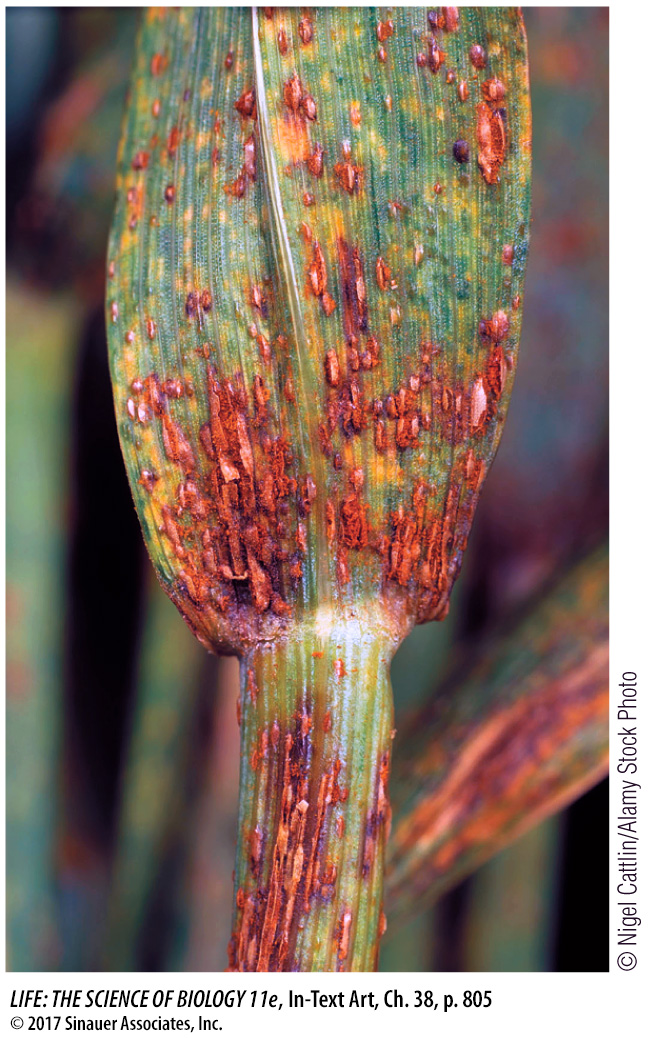Chapter Introduction
805
38
key concepts
38.1
Plants Respond to Pathogens with Constitutive and Induced Responses
38.2
Plants Have Mechanical and Chemical Defenses against Herbivores
38.3
Plants Can Adapt to Environmental Stresses
Plant Responses
to Environmental
Challenges

investigating life
Can Scientists Breed Disease-
In 1998, William Wagoire, a plant geneticist in Uganda, was astounded to find red blotches (pustules) on the stems of wheat plants he was breeding. Wheat rust (Puccinia graminis), the fungus that causes the pustules, had supposedly been rendered almost extinct 25 years previously when a gene from rye plants was crossed into wheat, making it resistant to this fungal disease. This landmark achievement had protected the crop that provides one-
Although two generations of farmers worldwide have never seen an epidemic of wheat rust, its history is well known. The ancient Romans invoked a deity, “Robigus,” to ward the mold off their crops. Seventeenth-

Wagoire used DNA markers to identify the strain of wheat rust he had found. Comparing it with known strains stored in a few laboratories, he found that his strain was new and unique. Clearly, Ug99 (for Uganda 1999) had evolved a way to get around the resistance genes in modern wheat.
When wheat stem rust pustules burst, thousands of spores are released, any one of which can be carried by the wind to a susceptible plant. One hectare of an infected wheat field can release more than 10 billion spores. Carried by prevailing winds, the epidemic spread of Ug99 quickly crossed Africa. By 2001 it had infected wheat in Kenya; in 2003 it was in Ethiopia; in 2006 it crossed the Red Sea to Yemen; in 2009 it was in Iran. At the same time, winds carried the spores south to Zimbabwe and South Africa. Biologists fear that Ug99 could reach central Asia and Australia by prevailing winds; spores could reach North America by the “747 route,” through international airplane travel. The Borlaug Global Rust Initiative has been set up to try to use knowledge of plant and fungal biology to stop the spread of this disease before it is too late. More than 1,000 scientists from hundreds of institutions are working together to study the pathogen and host, find genes for resistance, and breed wheat strains that have these genes.
How can knowledge of plant and fungal biology be used to prevent the spread of wheat rust?